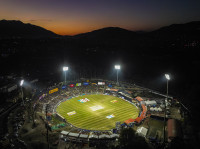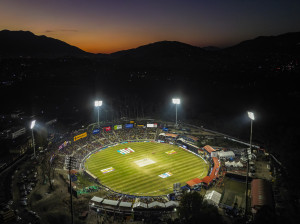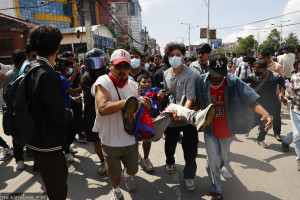Editorial
Another milestone
There’s much to celebrate about Nepal becoming the first South Asian country to register queer marriage.
It’s wedding season, and the news of friends, relatives, colleagues and neighbours getting married is not unusual. But what is unique this time around is the news of Surendra Pandey and Ram Bahadur Gurung, alias Maya, tying the knots in what is called the first case of registered queer marriage in Nepal. In fact, the union between Surendra and Maya, formalised through registration at the Dordi Rural Municipality in Lamjung, is a rare event in the region, as Nepal is the first South Asian country to register queer marriage. With this, the country has moved a step further towards implementing the Supreme Court interim order, issued in June this year, to register marriages of this kind.
Here is a caveat, though. In the absence of a law instrumentalising the Supreme Court directive, the marriage between Surendra and Maya, officials say, has been marked in the temporary record. Moreover, the couple has been identified in their marriage certificate as husband and wife, seemingly in continuation of the normative definition of male spouse as husband and female spouse as wife. Maya’s identification of themself as a woman could have prompted the officials to attempt to balance legality and moral action.
The government must work immediately to make necessary laws to facilitate the registration of queer marriages so that non-binary relationships could be spelled out in their multiple hues. Only then will the first step taken by a rural municipality towards ensuring the rights of LGBTQIA+ people be a national cause for equality and identity. In doing so, Nepal can show a greater part of the world what it means to recognise the personal marital choices of their citizens.
The registration of the marriage between Surendra and Maya has not come easy. It is, rather, the result of years of lobbying from human rights activists, especially those calling for the recognition of non-heteronormative relationships. Especially after the 2006 People's Movement, people belonging to different identity groups found a space to call for representation in the Nepali political and social systems. Amid this, individuals and groups asking for recognition of non-heteronormative unions raised their voices and were supported by a significant section of the Nepali public. In 2007, the Supreme Court gave a verdict for recognition of same-sex marriages to ensure protection for gender and sexual minorities; in 2008, Sunil Babu Pant became the first openly gay parliamentarian in the country; in 2015, the Constitution of Nepal allowed people to identify by the “third gender” on their citizenship certificates. The apex court order, in June this year, further solidified the LGBTQI+ people’s struggle for equality.
Moreover, there has been a visible change in Nepali public’s attitude to queer relationships. From attending the annual queer parades in significant numbers to accepting queer interests in friends and relatives, Nepalis have, at least in the South Asian context, become trailblazers in what it means to accept unique identities and choices of human beings. There is, of course, no denying the harassment individuals from the LGBTQI+ community face at the hands of individuals and institutions without a sense of responsibility and justice. And still far too many people in Nepal have a lopsided idea of normalcy as they continue to see queer folks as ‘deviant’. But the story of the past decade-and-a-half in Nepal towards recognising citizens' rights to choosing partners beyond the male-female binary is largely positive. The civil society and the government must come together to transform these small triumphs into normative practices.




 20.12°C Kathmandu
20.12°C Kathmandu














